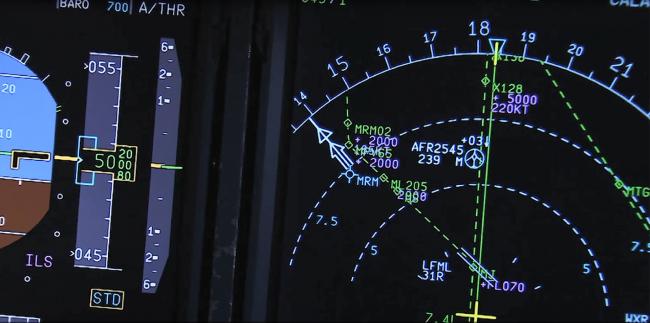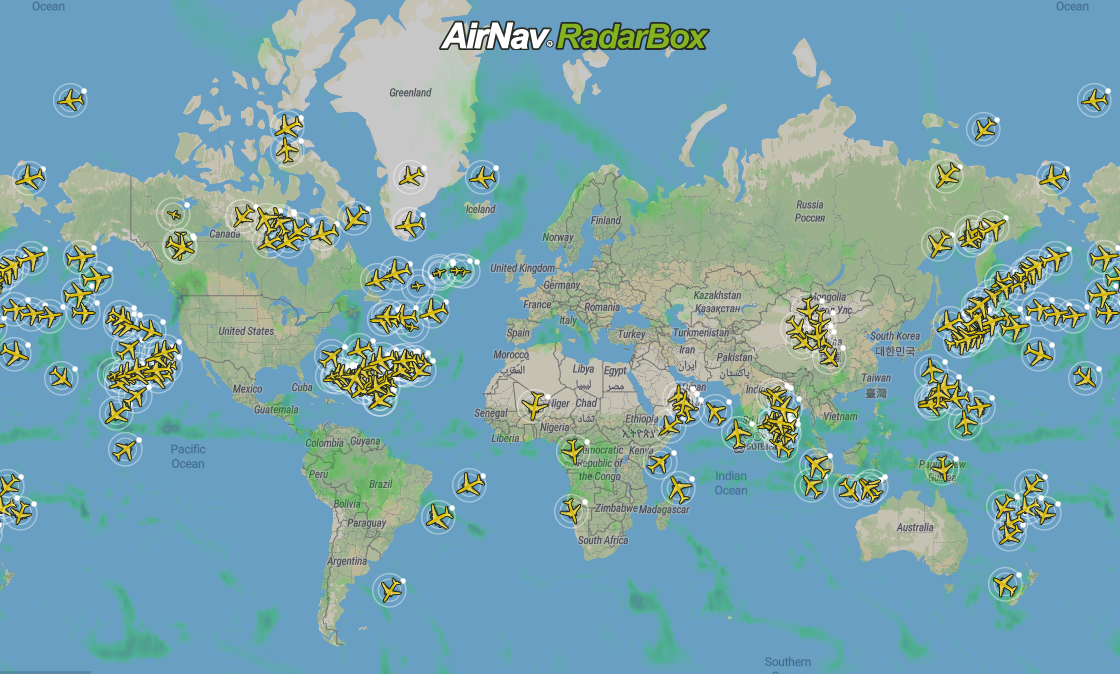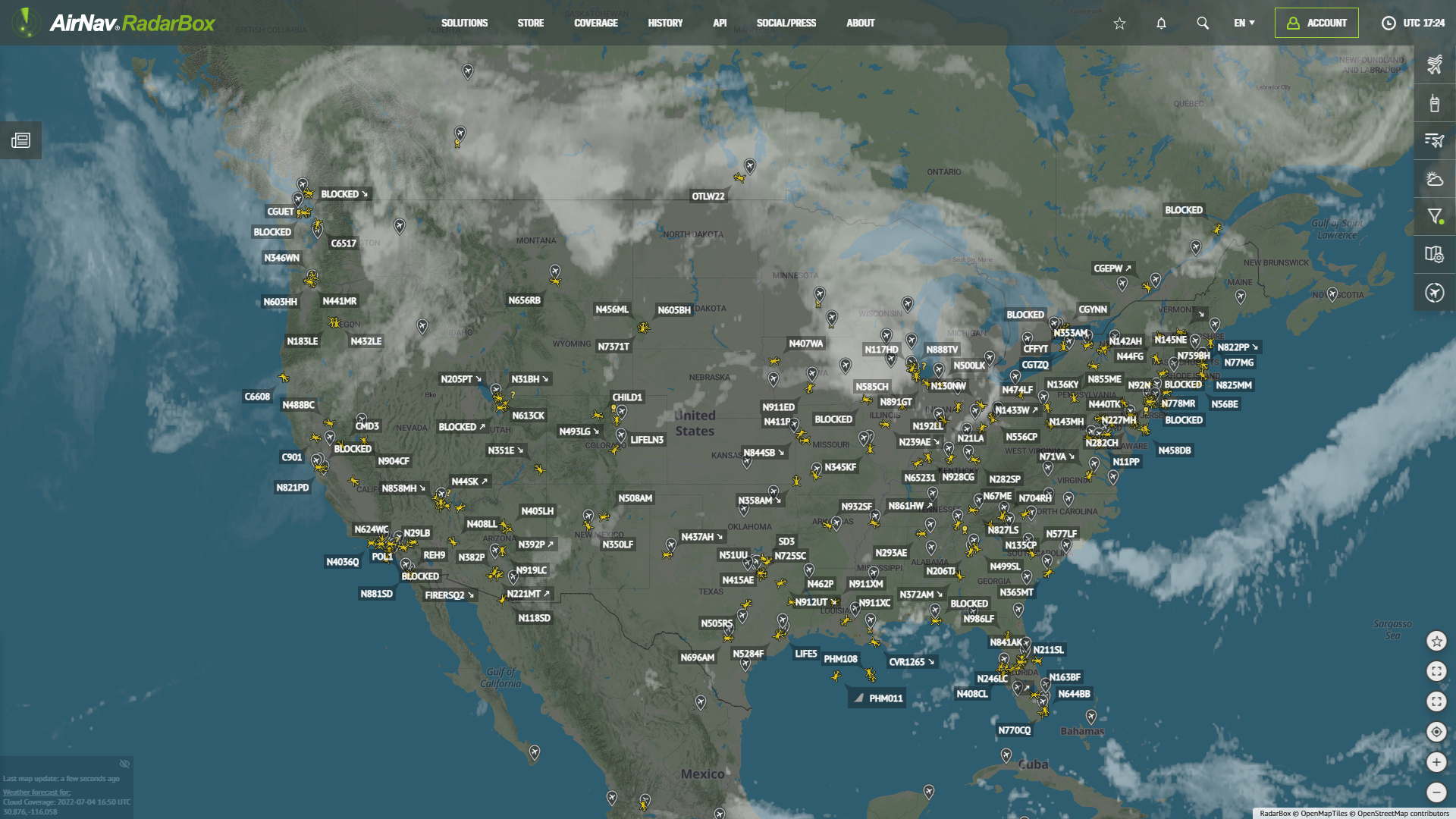ADS-B In and ADS-B Out - What's the difference?
Automatic Dependent Surveillance-Broadcast (ADS-B) is a worldwide aviation system based on the 1090 and 978 MHz band spectrum used by aircraft to constantly broadcast, over a radio message their current, position, speed, altitude, and other flight parameters to receivers on the ground or in space (on satellites). ADS-B can be further classified as ADS-B Out & ADS-B In. What's the difference? Continue reading our blog post to learn more about these two reception modes and the difference between them.
ADS-B Out
ADS-B Out works by broadcasting information about an aircraft's GPS location, altitude, ground speed, and other data to ground stations and other aircraft, once per second. Air traffic controllers and properly equipped aircraft can immediately receive this information. This offers more precise tracking of aircraft compared to radar technology, which sweeps for position information every 5 to 12 seconds.
ADS-B In
ADS-B In provides operators of properly equipped aircraft with weather and traffic position information delivered directly to the cockpit. ADS-B In-equipped aircraft have access to the graphical weather displays in the cockpit as well as text-based advisories, including Notices to Airmen and significant weather activity.
How ADS-B In and Out Works Infographic - Source: Spire Aviation
Here we can see ADS-B In operation, an aircraft receiving altitude, speed, callsign information from other aircraft, and ATC. ADS-B Out is when an aircraft transmits speed and altitude information to other aircraft and ATC. In other words, ADS-B In receives information, and ADS-B Out, as the name implies, transmits out to other aircraft and ATC.

Unknown author, via Wikimedia Commons
EuroAtlantic Airways flight YU780 is an example of receiving data via ADS-B Out. The carrier's Boeing 777 is sending ADS-B data to AirNav RadarBox servers via Ground-based ADS-B.

EuroAtlantic Airways YU780 flight path

PFD (Primary Flight Display) & ND (Navigation Display) View - Photo source: EuroAtlantic Airways
What are the regulations for ADS-B (FAA)?
The FAA requires ADS-B Out capability in the continental US in the ADS-B rule airspace designated by FAR 91.225:
- Class A, B, and C airspace;
- Class E airspace at or above 10,000 feet MSL, excluding airspace at and below 2,500 feet agl;
- Within 30 nautical miles of a Class B primary airport (the Mode C veil);
- Above the ceiling and within the lateral boundaries of Class B or Class C airspace up to 10,000 feet;
- Class E airspace over the Gulf of Mexico, at and above 3,000 feet MSL, within 12 nm of the U.S. coast.
Satellite-Based ADS-B
Besides a ground-based ADS-B base of over 27,000,000 ADS-B stations, AirNav RadarBox also provides tracked data via space-based ADS-B.
Traditionally, ground-based ADS-B receivers along with Radar have been used in tracking and air surveillance. This method, however, has had its own set of challenges since ADS-B tracking is based on the line of sight principle, and mountains, tall buildings, vast water bodies, etc. can significantly decrease an ADS-B receiver's range and impede its ability to receive ADS-B out signals emitted by aircraft. Thus limiting a receivers' range to a small geographic area of 100 - 150 nautical miles.
The Satellite-based ADS-B solution uses data from ADS-B receivers placed on nano-satellite constellations in space to track aircraft as they fly. This data is then relayed from our satellite service providers to AirNav's servers for processing. Once this data is processed (in milliseconds) it is then displayed on the Radarbox website for site users, ANSP's or operators to view. What makes Satellite-based ADS-B tracking a game-changer is that tracking is no longer limited by terrain, weather, location, or infrastructure. Further, working with multiple satellite-based data providers has also ensured the economizing of our Satellite-based ADS-B offering.

Aircraft being tracked via satellite by AirNav RadarBox
Space-based ADS-B Solutions
If you're looking for a company that provides satellite-based ADS-B data in addition to other data sources please get in touch with us for more information. If you prefer, you may call us at 1-800-401-2474 or email us at [email protected] to discuss a solution.
READ NEXT...
 78129
78129Tracking Helicopters With RadarBox
Today we'll explore how to filter and track helicopters on RadarBox.com. Read this blog post to learn more...- 30314
AirNav Announces Coronavirus Related Data & Graphics Available
AirNav Systems is providing data COVID-19 air traffic related data for analysis, study and use.  21682
21682Replay Past Flights with Playback
AirNav RadarBox officially launches the playback function on RadarBox.com, allowing users to replay the air traffic for a specific date and time in the past, within a 365-day period. Read our blog post to learn more about this feature.

